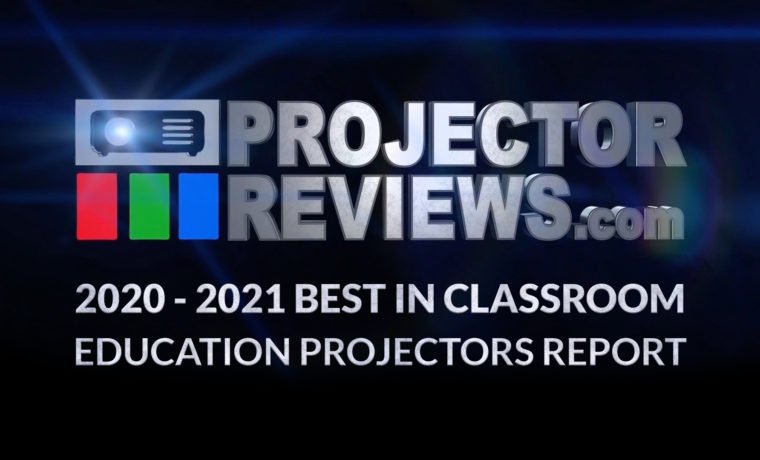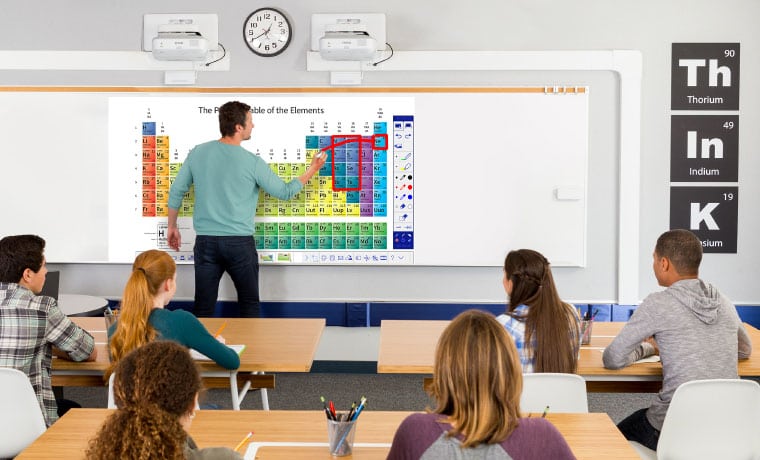Laser projectors! This is the first year we didn't have a single lamp based projector in our Higher Education, or Hi-End/ Specialty sections, only in the K-12 area. Prices on laser projectors still mostly start around $1,500, which, at that price point, is still double the cost of a comparable lamp based projector. But, maintenance costs being what they are, even an extra $750, say over 8-10 years, will be less than the time and effort to change out a couple of lamps...
Don't forget Casio, who has made their projector living for the last decade by selling more solid state projectors (theirs are Laser/LED hybrids, but cost far less), than any other major manufacturer. Their hybrid projectors start well under $1,000, although our two entries in this report are around $1,000 and $1,700. Their pricing advantage gives them a real edge in K-12.
When it comes to higher education though, just about every brand you've heard of now has "affordable lasers." Those are projectors with roughly 5,000 lumens and WUXGA or 1080p resolution, with list prices mostly under $2,500, and WXGA/720p lasers under $2,000 list. Not only will they require little or no maintenance compared to lamp projectors, but will no doubt cost less in the long run, because of the much higher cost to support lamp changes...
Ultra short throw projectors, with or without interactivity, are expensive, but continue to grow in popularity, especially interactive ones. In the higher education market, there are now several such interactive UST projectors where you can mount 2 or three along a giant whiteboard in a lecture hall, and splitting your source over two or three screens (think 6 feet tall by 25+ feet), just using a simple connection cable. Add interactivity, then multiple students can work up there at once, using touch of pens. Or, perhaps a formula crazy professor can fill 100 sq feet of whiteboard with all kinds of math or physics...
Pretty advanced networking is now expected in higher education, and more and more in K-12. For very high end, such as museums, tend to select projectors with multiple lens choices (for many situations, projecting at any angle, edge blending (for seamless large images), and projection mapping large (or small objects).
Resolution: Remains mostly WVGA/720p or WUXGA/1080p models for K-12. In higher education. our take is that WUXGA (or 1080p) dominates now, with 4K capable projectors going into some classrooms and halls, but mostly for STEMS fields. Let's face it: with 4K in a lecture hall, the folks in the back probably can't tell 4K from 720p. But in a lab or smaller classroom, looking at engineering drawings, renderings, medical images, or even displaying artwork, 4K definitely is the fast growing segment.
ALR screens: These optical screens reject a lot of a rooms ambient light. Definitely consider these screens in rooms with troublesome lighting. The extra cost for this type of screen should normally cost less than spending a lot more for a brighter projector to cut through ambient light. ALR screens are also now available for UST projectors, but they aren't as effective as ALR screens designed for standard. The first motorized ALR screens for UST projectors are now shipping (motorized regular ALR screens have been out there for about 4 years). Rigid screens are more suitable for the classroom. Count ALR screens as a real plus in the fight for larger, sharp displays maintaining good contrast and rich saturated colors under far less optimal conditions in terms of ambient light.



